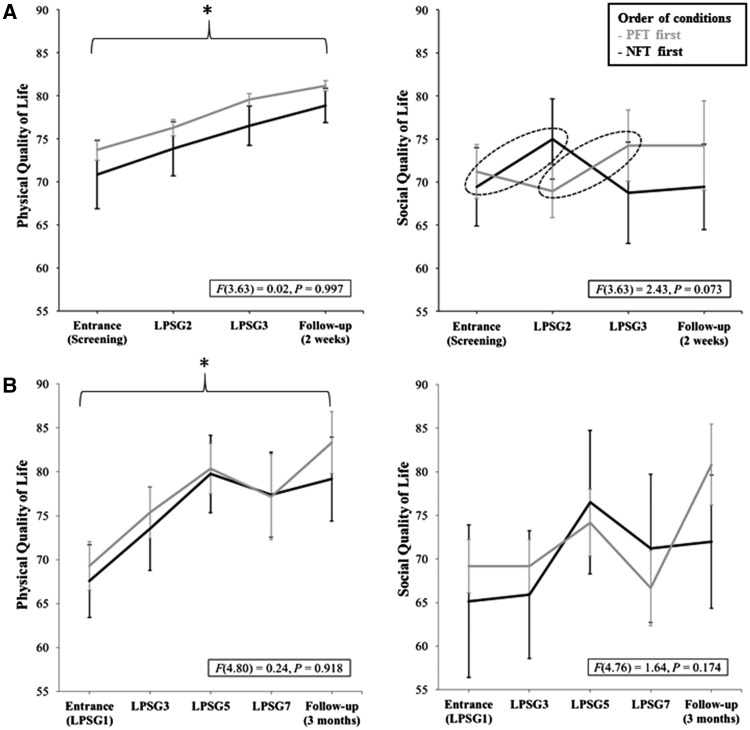Figure 1.
Comparison of the subjective quality of life data from our earlier single-blind (Schabus et al., 2014) and current double-blind (Schabus et al., 2017) study. (A) Subjective quality of life effects (WHOQOL) are plotted for the sub-domain physical quality of life (including activities of daily living, energy and fatigue, pain and discomfort, sleep and rest or work capacity) and social quality of life (including personal relationships and perceived social support) for our earlier single-blind study. Note that physical quality of life changes over time but irrespective of placebo-feedback training (PFT) or NFT. Data for social quality of life indicate a trend towards increased perceived social support only between sessions with real NFT training [dashed circles; i.e. entrance to LPSG2 in NFT-first group (n = 12); and LPSG2 to LPSG3 in the PFT-first group (n = 11)]. (B) The same subjective data for our double-blind study (Schabus et al., 2017) do not indicate differences in perceived social support (for NFT versus PFT training). Yet we found again a non-specific increase in physical quality of life from study entrance (LPSG1) to the follow-up after 3 months. Note that here LPSGs 1 and 3 flank the first training block (12× NFT or PFT) and LPSGs 5 and 7 flank the second training block (12× NFT or PFT). PFT-first participants included 10 and NFT-first 12 participants (i.e. participants with WHOQOL values for all five time points). F-values depict the interaction between group (NFTfirst, starting with NFT, PFTfirst, starting the protocol with PFT) and time [entrance, learning nights/polysomnographies (LPSG), and Follow-up]. Error bars indicate ± 1 standard error.

